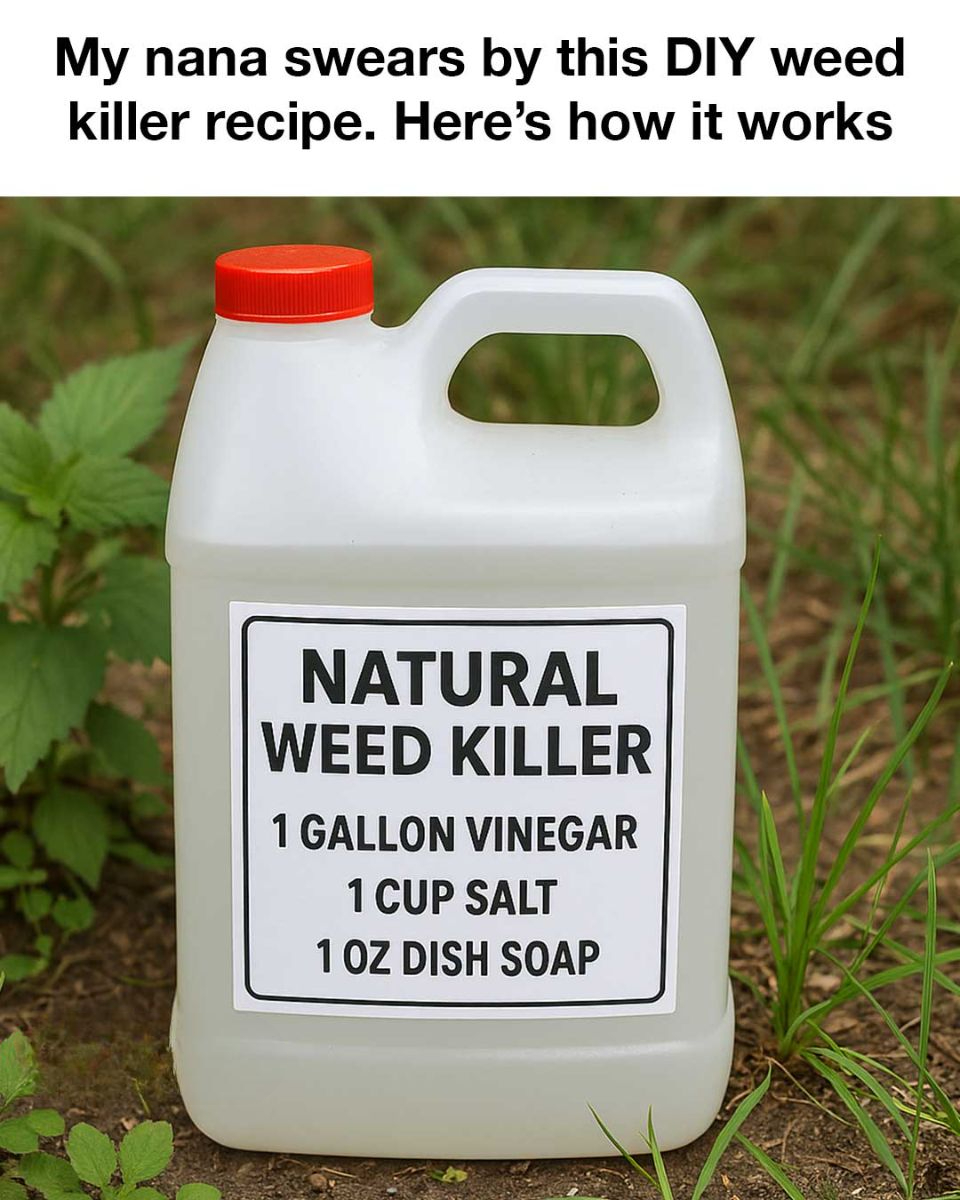In the world of gardening, weeds are the persistent enemy that every green thumb must battle. While commercial weed killers are widely available, they often contain harsh chemicals that can be harmful to the environment, pets, and even the plants you want to protect. That’s why many gardeners are turning to natural alternatives—and one of the most beloved solutions comes straight from my nana’s garden playbook.

With decades of hands-on experience, she swears by her DIY weed killer recipe, which is simple, effective, and eco-friendly. What makes it even better is that it uses ingredients you probably already have at home: white vinegar, salt, and liquid dish soap. This homemade mixture not only cuts costs but also provides peace of mind, as you know exactly what you’re applying to your soil. Nana’s weed killer dates back to a time when store-bought options were either unavailable or too expensive, so gardeners had to get creative. Passed down through generations, her recipe is tried and true. To make it, all you need is 1 gallon of white vinegar, 1 cup of table salt, and 1 tablespoon of liquid dish soap. Each ingredient plays a vital role.
The vinegar—especially the kind with 5% acetic acid—is the primary agent that damages the weed’s leaves on contact. Salt works by pulling moisture from the plant, which prevents it from taking in water and nutrients, essentially drying it out from the inside. Dish soap acts as a surfactant, breaking down the surface tension so the vinegar and salt cling to the leaves rather than sliding off. This combination ensures the solution sticks around long enough to do serious damage to those unwanted plants. From a scientific perspective, vinegar works by breaking down cell membranes on the leaves of the plant. The acid causes the leaves to wither, which is most effective when applied to young, tender weeds. Stronger concentrations of acetic acid can increase the effect, but standard household vinegar typically gets the job done safely. It’s worth noting that vinegar is non-selective, so it will damage any plant it touches—be it weed or rosebush—so precision is key. Salt intensifies the damage, but it’s also the ingredient you need to be most careful with.
Too much salt can degrade your soil, making it hard to grow anything in that spot later. For that reason, it’s best used on areas like driveways, patios, and sidewalk cracks where nothing else is supposed to grow anyway. The dish soap, though it might seem like a minor player, helps everything else work better by ensuring the solution adheres to the leaves instead of being washed away. To make the weed killer, start by pouring the vinegar into a large spray bottle or garden sprayer. Add the salt and stir until it dissolves completely—this might take a few minutes. Then mix in the dish soap gently.
When it’s all combined, the mixture is ready to use. For best results, spray the solution directly onto the leaves of the weeds on a sunny day, preferably when temperatures are above 70°F. The heat helps speed up the drying effect, and dry weather means rain won’t wash the mixture away before it gets the job done. Apply carefully and avoid spraying on any plants you want to keep. You may need to reapply the mixture after rainfall or to tackle particularly stubborn weeds. As with any gardening method, safety and environmental responsibility are important. Even though the ingredients are natural, it’s still wise to wear gloves and eye protection when mixing and spraying. And be mindful of where the runoff goes—avoid applying near water sources, and don’t overuse salt on soil where you plan to plant in the future. Compared to commercial weed killers that often rely on synthetic compounds and can linger in the soil or groundwater, this DIY approach feels a lot gentler and cleaner. It might require a bit more patience and repeat applications, but the results speak for themselves. Gardeners across the country have had great success with this method, using it to clean up everything from vegetable patches to driveway cracks. Some even customize the recipe by adjusting the vinegar strength or salt content to fit their specific needs. So next time weeds start creeping in, try this homemade solution from Nana’s gardening arsenal. It’s simple, safe, and surprisingly powerful.





